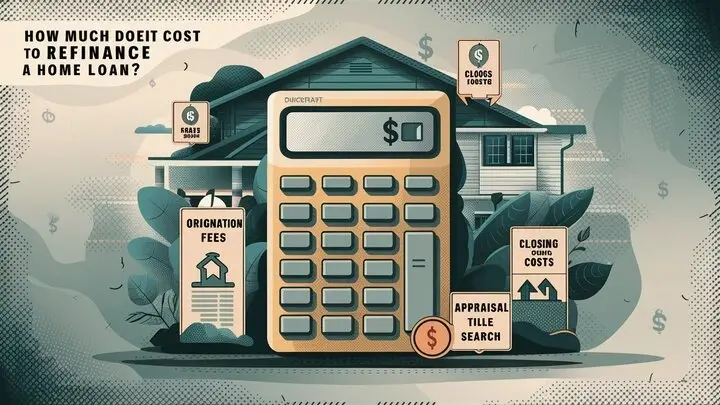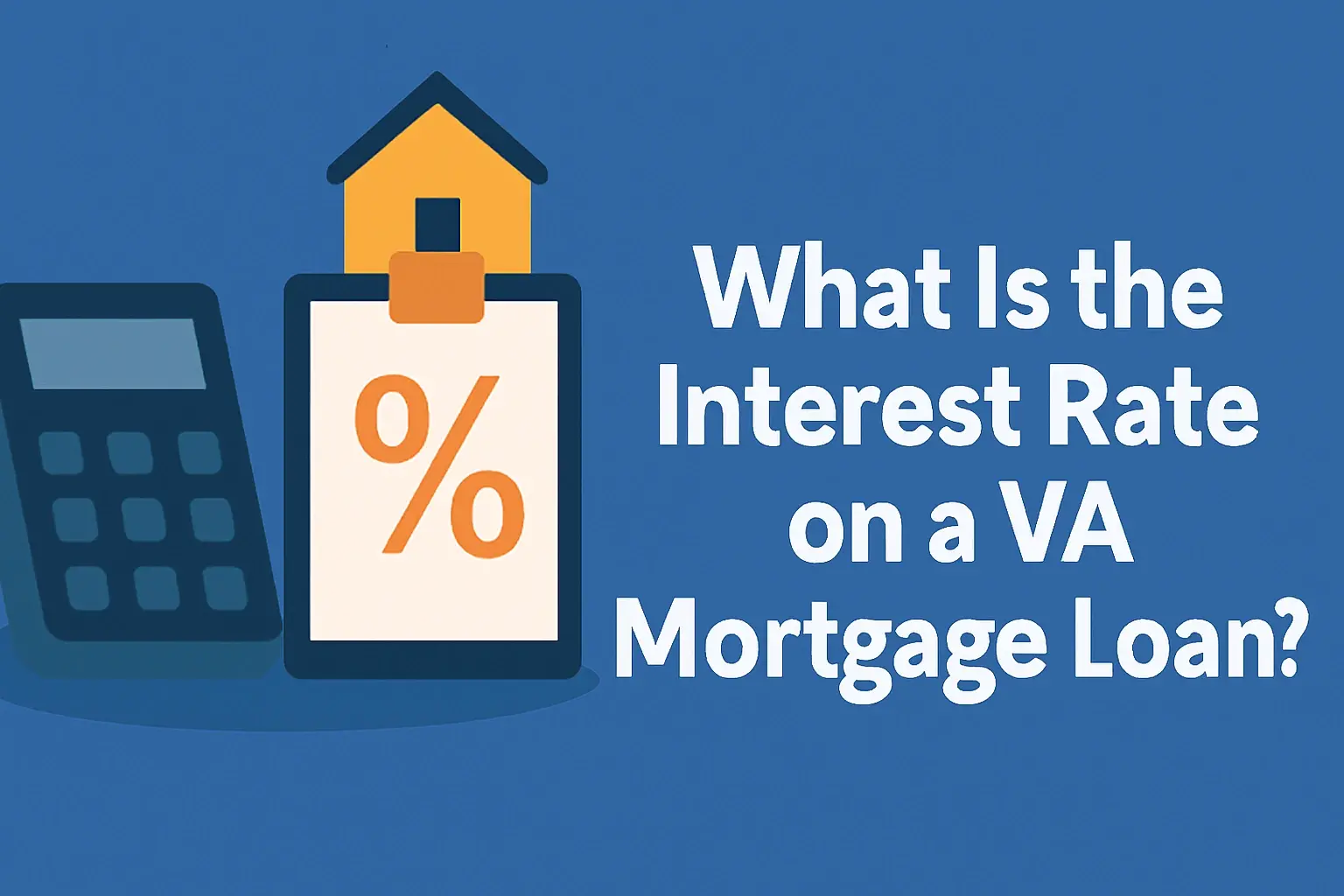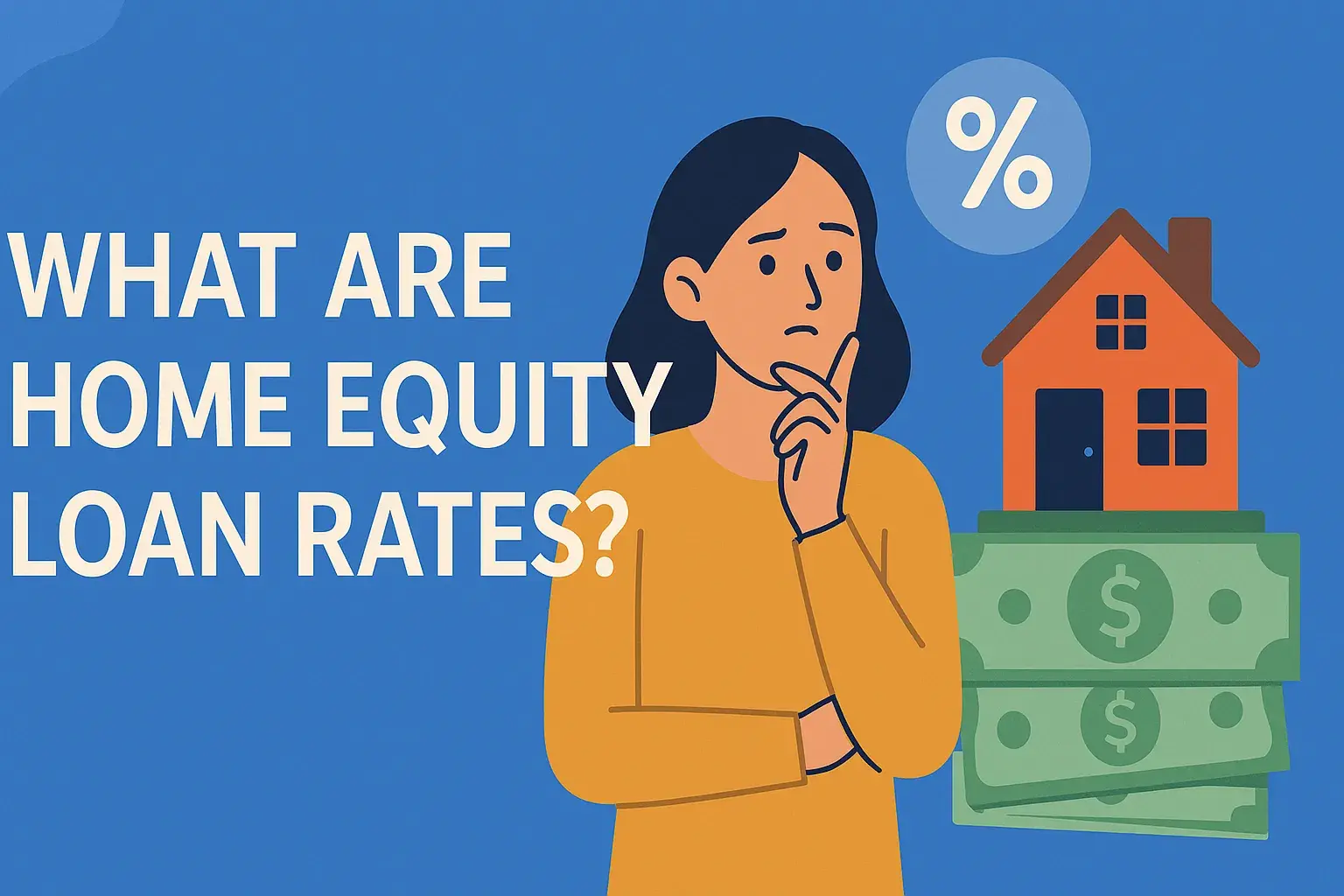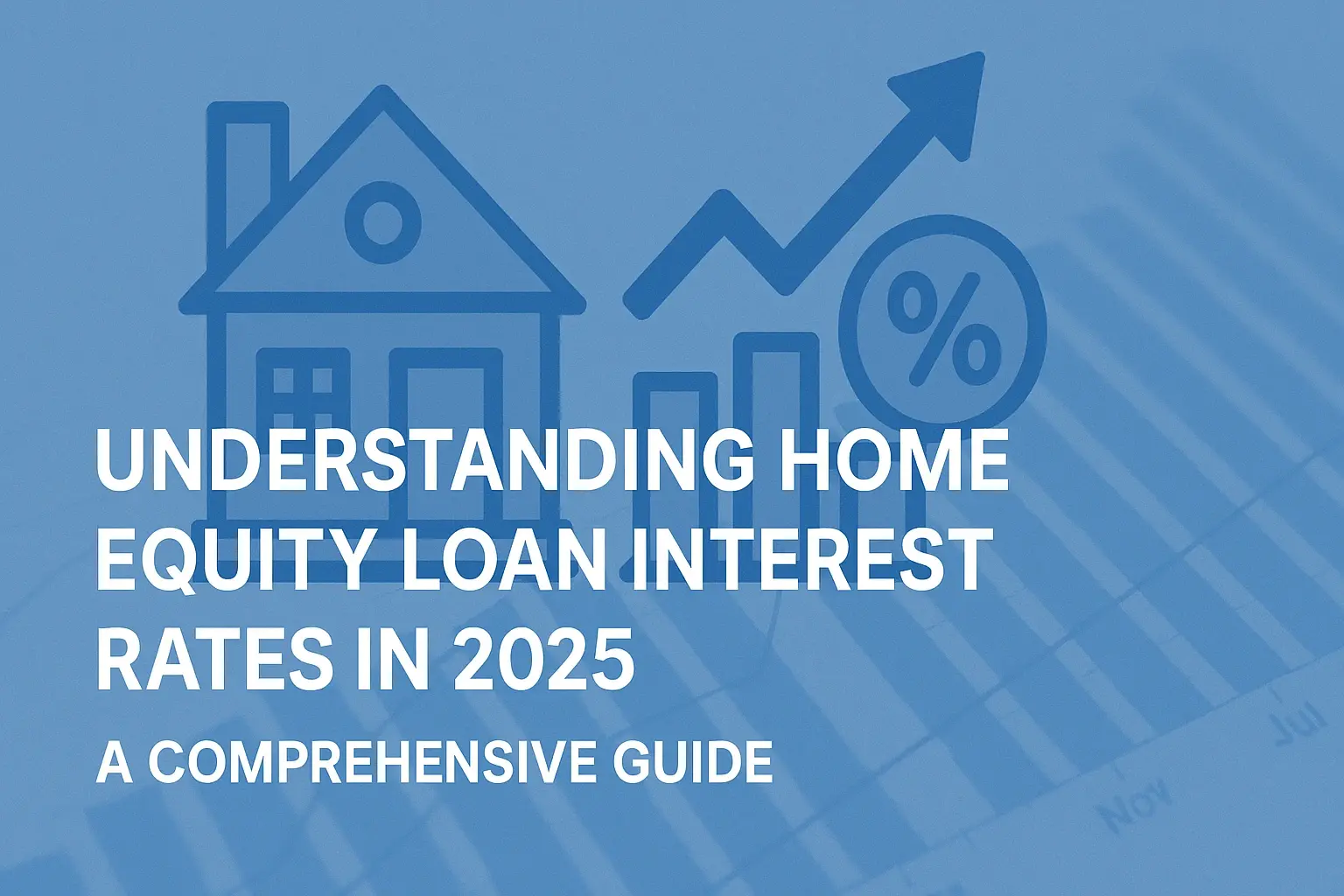-
Posted on: 23 Aug 2024

-
Understanding the Costs of Refinancing Your Home Loan
Refinancing your home loan can unlock significant savings, but understanding the associated costs is crucial. In 2025, knowing the average expense, the specific fees involved, and how to minimize them empowers you to make a financially sound decision. This guide will demystify the process, ensuring you get the most value from your mortgage refinance.
What Exactly is Home Loan Refinancing?
Home loan refinancing, often simply called refinancing, is the process of replacing your existing mortgage with a new one. This new loan typically has different terms, such as a lower interest rate, a shorter repayment period, or a different loan type. When you refinance, you're essentially paying off your old mortgage with the funds from your new loan. The primary goal is usually to improve your financial situation by reducing your monthly payments, lowering the total interest paid over the life of the loan, or accessing your home's equity.
It's important to distinguish refinancing from a home equity loan or a home equity line of credit (HELOC). While both involve borrowing against your home's equity, refinancing replaces your entire existing mortgage, whereas home equity loans and HELOCs are separate loans taken out in addition to your primary mortgage. Understanding this distinction is key when evaluating your options and their associated costs.
Why Consider Refinancing Your Mortgage in 2025?
The decision to refinance your mortgage in 2025 hinges on several potential benefits that can significantly impact your financial well-being. The most compelling reasons often revolve around financial optimization and flexibility:
- Lower Interest Rates: If current market interest rates are lower than your existing mortgage rate, refinancing can lead to substantial savings on interest payments over the life of the loan. Even a small reduction in your interest rate can translate into thousands of dollars saved.
- Reduced Monthly Payments: By securing a lower interest rate or extending the loan term (though this increases total interest paid), you can lower your monthly mortgage payment. This can free up cash flow for other financial goals, such as saving, investing, or paying down other debts.
- Shorten Loan Term: Conversely, if you can afford slightly higher monthly payments, refinancing to a shorter loan term (e.g., from a 30-year to a 15-year mortgage) can help you pay off your home much faster and save a considerable amount on total interest.
- Accessing Home Equity: Through a cash-out refinance, you can borrow more than you owe on your current mortgage and receive the difference in cash. This cash can be used for major expenses like home renovations, education costs, debt consolidation, or investments.
- Switching Loan Types: You might want to switch from an adjustable-rate mortgage (ARM) to a fixed-rate mortgage for payment stability, or vice versa, if market conditions are favorable for an ARM.
- Removing Private Mortgage Insurance (PMI): If you initially put down less than 20% and are paying PMI, refinancing once your home equity reaches 20% or more can eliminate this extra monthly cost.
In 2025, with fluctuating economic conditions and interest rate environments, homeowners are actively seeking ways to optimize their housing costs. Refinancing remains a powerful tool for achieving these financial objectives.
The Average Cost to Refinance a Home Loan: A 2025 Snapshot
The cost to refinance a home loan can vary significantly, but a general estimate is often cited. For 2025, the average cost to refinance a mortgage typically falls between 2% and 6% of the loan amount. This percentage is commonly referred to as "closing costs."
Let's break this down with a hypothetical example. If you have a remaining mortgage balance of $300,000 and the refinancing costs are estimated at 3% of the loan amount, your closing costs would be approximately $9,000.
It's crucial to understand that this is an average. The actual amount you pay will depend on a multitude of factors, including the specific fees charged by your lender, your geographic location, the type of loan you're refinancing, and your individual financial profile. Some borrowers might pay less than 2%, while others could exceed 6%, especially if they opt for discount points to secure a lower interest rate.
The total dollar amount can seem substantial, which is why understanding each component of these costs and how they are calculated is paramount. This knowledge allows you to negotiate effectively with lenders and make informed decisions about whether the savings from refinancing outweigh the upfront expenses.
A Detailed Breakdown of Common Refinancing Fees
Closing costs for a refinance are composed of various individual fees. Understanding each one helps you scrutinize your loan estimate and identify potential areas for negotiation or savings. Here's a comprehensive look at the most common fees you might encounter in 2025:
Appraisal Fee
What it is: This fee covers the cost of a professional appraisal of your home. An appraiser assesses your property's value based on its condition, features, recent sales of comparable homes in your area, and current market trends. Lenders require an appraisal to ensure the loan amount does not exceed the home's market value, thereby protecting their investment.
Typical Cost: $300 - $600, depending on the property's size, location, and complexity.
Loan Origination Fee
What it is: This fee is charged by the lender to process your loan application, underwrite the loan, and cover administrative costs. It's essentially the lender's profit for providing the loan. Some lenders may charge a flat fee, while others charge a percentage of the loan amount.
Typical Cost: 0.5% - 1% of the loan amount. For a $300,000 loan, this could range from $1,500 to $3,000.
Title Search and Title Insurance
What it is: Before finalizing your refinance, a title company conducts a thorough title search to ensure there are no outstanding liens, claims, or encumbrances on your property's title. Title insurance protects both you and the lender against any future claims or defects in the title that may arise from past issues. You'll typically pay for both an owner's title insurance policy (for yourself) and a lender's title insurance policy (for the new lender).
Typical Cost: $500 - $3,000, depending on the loan amount and state regulations.
Credit Report Fee
What it is: Lenders pull your credit report to assess your creditworthiness and determine your eligibility for the refinance. This fee covers the cost of obtaining your credit history from the major credit bureaus (Equifax, Experian, and TransUnion).
Typical Cost: $30 - $50.
Recording Fees
What it is: When you finalize your refinance, the new mortgage deed must be recorded with your local government's registry office (usually the county recorder's office). This fee is charged by the government to officially document the new lien on your property.
Typical Cost: $50 - $250, varies by county.
Notary Fees
What it is: A notary public is required to witness the signing of your loan documents and verify your identity. They will stamp and sign the documents, making them legally binding.
Typical Cost: $50 - $150.
Flood Certification Fee
What it is: Lenders are required to determine if your property is located in a federally designated flood hazard area. If it is, you'll be required to carry flood insurance. This fee covers the cost of obtaining that certification.
Typical Cost: $15 - $25.
Survey Fee
What it is: In some cases, particularly if there have been boundary disputes or significant changes to the property, a land survey may be required. This fee covers the cost of a surveyor to map out your property's exact boundaries.
Typical Cost: $400 - $1,000.
Legal Fees
What it is: Depending on your state and the complexity of the transaction, you might incur legal fees. An attorney may be involved in reviewing documents, conducting the closing, or providing legal counsel related to the refinance.
Typical Cost: $300 - $1,000 or more.
Discount Points
What it is: Discount points are fees paid directly to the lender at closing in exchange for a reduced interest rate on your mortgage. One point is equal to 1% of the loan amount. For example, paying two points on a $300,000 loan would cost $6,000. This is an optional cost, but it can be beneficial if you plan to stay in your home for a long time.
Typical Cost: 0.5% - 1% of the loan amount per point.
Escrow Fees
What it is: When you refinance, your lender may require you to fund an escrow account for property taxes and homeowners insurance. This involves depositing a certain amount of money upfront to cover these future expenses. You'll also typically pay for a portion of the current month's taxes and insurance, plus a reserve for the next month.
Typical Cost: Varies greatly depending on your property taxes and insurance premiums, but can be several thousand dollars to establish.
Private Mortgage Insurance (PMI) Removal
What it is: If you're refinancing and your loan-to-value (LTV) ratio is now below 80%, you may be able to eliminate PMI. While not a direct closing cost, the process of removing PMI might involve an appraisal fee if the lender requires one to confirm the LTV. If your new loan has an LTV above 80%, you might still need to pay PMI on the new loan unless you make a substantial down payment.
Typical Cost: Varies, but the cost of PMI itself can be 0.5% to 1% of the loan amount annually.
It's important to note that some of these fees can be rolled into the loan itself, meaning you finance them rather than paying them upfront. However, this will increase your loan amount and therefore your total interest paid over time.
Factors That Influence the Total Cost of Refinancing
While the breakdown of fees provides a general understanding, several key factors can significantly alter the total cost of your home loan refinance in 2025. Understanding these variables can help you anticipate expenses and shop around more effectively.
Loan Amount
How it impacts cost: Many refinance fees are calculated as a percentage of the loan amount. This includes origination fees, title insurance, and discount points. Therefore, a larger loan amount will naturally result in higher dollar costs for these items, even if the percentage remains the same. Conversely, a smaller loan amount will lead to lower absolute costs for these fees.
Lender Policies and Fees
How it impacts cost: Each lender has its own fee structure. Some lenders may have higher origination fees, while others might charge more for appraisals or title services. Some lenders may also offer discounts or waive certain fees to attract borrowers. Comparing loan estimates from multiple lenders is crucial to identify the one with the most competitive fee schedule.
Your Creditworthiness
How it impacts cost: Your credit score plays a significant role in the interest rate you'll be offered. Borrowers with excellent credit scores (typically 740 and above) generally qualify for the lowest interest rates and may even be eligible for lower fees. Those with lower credit scores might face higher interest rates and potentially higher fees, as lenders perceive them as a greater risk.
Property Location
How it impacts cost: Costs can vary by state and even by county. For instance, recording fees, title insurance rates, and real estate transfer taxes differ significantly based on local regulations. Some states have more robust consumer protection laws that might cap certain fees, while others may have higher administrative costs associated with property transactions.
Type of Refinance
How it impacts cost:
- Rate-and-Term Refinance: This is the most common type, where you replace your existing mortgage with a new one with different terms (rate, duration). The costs are generally standard closing costs.
- Cash-Out Refinance: This involves borrowing more than your current mortgage balance and receiving the difference in cash. The process is similar to a rate-and-term refinance, but the higher loan amount will increase the percentage-based fees.
- No-Cost Refinance: While often marketed as "no-cost," these usually involve the lender absorbing the closing costs by charging a slightly higher interest rate or rolling the costs into the loan. The ultimate cost is still there, just paid differently.
Understanding these influencing factors allows you to have a more realistic expectation of your refinancing costs and to better compare offers from different lenders.
Calculating Your Break-Even Point: Is Refinancing Worth It?
The true value of refinancing isn't just in the headline interest rate reduction but in the total savings over time. To determine if refinancing is financially beneficial, you must calculate your break-even point. This is the point in time when your monthly savings from the new loan will equal the total cost of refinancing.
Here's a step-by-step guide to calculating your break-even point:
- Determine Your Total Refinance Costs: Sum up all the closing costs associated with your new loan. This includes appraisal fees, origination fees, title insurance, recording fees, etc. Let's call this the "Total Refinance Cost."
- Calculate Your Monthly Savings: Subtract the new monthly principal and interest payment from your old monthly principal and interest payment. Be sure to use the full payment amount (P&I) for this calculation, not including taxes and insurance if they are escrowed separately and remain the same. Let's call this the "Monthly Savings."
- Calculate the Break-Even Point: Divide the Total Refinance Cost by your Monthly Savings.
Break-Even Point (in months) = Total Refinance Cost / Monthly Savings
Example:
Suppose your total closing costs for refinancing are $7,500. Your old monthly principal and interest payment was $1,800, and your new monthly principal and interest payment will be $1,650. Your monthly savings are $150 ($1,800 - $1,650).
Break-Even Point = $7,500 / $150 = 50 months.
In this example, it would take 50 months (or just over 4 years) for the savings from your lower monthly payment to recoup the initial costs of refinancing. If you plan to sell your home or move before this 50-month mark, refinancing might not be financially advantageous.
Considering Total Interest Paid:
Beyond the break-even point, it's also wise to consider the total interest you'll pay over the life of the new loan compared to your old loan. If refinancing to a lower rate significantly reduces your total interest paid, even if the break-even point is longer, it can still be a worthwhile investment, especially if you intend to stay in your home for many years.
What the break-even point tells you:
- If you plan to stay in your home longer than your break-even point, refinancing is likely a good financial move.
- If you plan to move or sell before reaching the break-even point, the upfront costs might outweigh the savings.
- Always factor in the total interest saved over the life of the loan, not just the monthly payment reduction.
Using a mortgage refinance calculator can help you quickly estimate these figures. Many online tools allow you to input your loan details and closing costs to find your break-even point and potential long-term savings.
Can You Refinance Without Closing Costs? Exploring No-Cost Refinances
The concept of refinancing "without closing costs" is appealing, and it is indeed possible, though it comes with nuances. These are often referred to as "no-cost refinances" or "lender-paid closing costs."
How "No-Cost" Refinances Work:
When a lender offers a no-cost refinance, they are not literally absorbing all the expenses. Instead, they typically employ one of two strategies:
- Higher Interest Rate: The most common method is to offer you a slightly higher interest rate than you might qualify for with a traditional refinance. The lender uses the increased interest revenue over the life of the loan to cover your closing costs.
- Rolling Costs into the Loan: Alternatively, the lender may roll all the closing costs into the new loan amount. This means your loan principal will be higher than your original balance, increasing your monthly payments and the total interest paid over the life of the loan.
Is a No-Cost Refinance Always Better?
Not necessarily. While it eliminates the upfront cash outlay, you are essentially paying for these costs over time through a higher interest rate or a larger loan balance. You must perform the same break-even analysis as with a traditional refinance.
Example of a "No-Cost" Refinance:
Let's say your closing costs would normally be $7,500. A lender offers a no-cost refinance:
- Option A (Higher Rate): They offer you a rate of 6.5% instead of the market rate of 6.25%. The higher rate might result in a monthly payment that is slightly higher than if you paid the $7,500 upfront and got the 6.25% rate, but you avoid the immediate expense.
- Option B (Rolled In): They roll the $7,500 into your loan. If your original loan was $300,000, your new loan would be $307,500. This increases your monthly payment and the total interest paid significantly over 30 years.
When a No-Cost Refinance Might Make Sense:
- Cash Flow Limitations: If you don't have the liquid funds to cover closing costs upfront, a no-cost refinance can be a viable option to still benefit from a lower rate or payment.
- Short-Term Ownership: If you plan to move or sell your home relatively soon, and the difference in monthly payment is substantial, the immediate relief might be more valuable than long-term interest savings.
- Significant Rate Improvement: If the interest rate reduction offered with a no-cost refinance is still substantial enough to provide significant monthly savings, it might be worth the slightly higher rate or rolled-in costs.
Key Considerations for No-Cost Refinances:
- Read the Fine Print: Understand exactly how the lender is covering the costs.
- Compare Offers: Always compare a no-cost refinance offer with a traditional refinance offer from the same or different lenders. Calculate the break-even point for both scenarios.
- Long-Term Impact: Be aware that a higher interest rate or a larger loan balance will increase the total interest paid over the life of the loan.
While "no-cost" sounds attractive, it's essential to analyze the true cost and determine if it aligns with your long-term financial goals.
How to Compare Lenders and Minimize Refinancing Costs
The key to minimizing refinancing costs lies in diligent comparison shopping and negotiation. Lenders compete for your business, and understanding how to leverage this competition can save you thousands of dollars.
Here’s a strategic approach to comparing lenders:
- Get Multiple Loan Estimates: The Loan Estimate (LE) is a standardized document that outlines all the estimated costs associated with your mortgage refinance. Aim to get LEs from at least three to five different lenders (banks, credit unions, online mortgage companies). This will give you a clear picture of the rates and fees being offered.
- Compare Interest Rates: This is often the most significant factor in long-term savings. Ensure you are comparing the Annual Percentage Rate (APR), which includes the interest rate plus certain fees, giving you a more accurate representation of the total cost of borrowing.
- Scrutinize All Fees: Go through each section of the Loan Estimate carefully. Pay close attention to:
- Origination Charges: Lender fees for processing and underwriting.
- Third-Party Fees: Costs for services like appraisals, title insurance, credit reports, and flood certifications.
- Prepaid Items: Escrow deposits for taxes and insurance, and per diem interest.
Some fees are lender-controlled, while others are set by third parties. You may have more room to negotiate lender-controlled fees.
- Negotiate Fees: Don't be afraid to negotiate. If you have a competitive offer from another lender, you can often ask a preferred lender to match or beat it. You might be able to negotiate down origination fees, appraisal fees (especially if you've had a recent one), or even ask the lender to cover some closing costs in exchange for a slightly higher interest rate.
- Understand Lender-Paid vs. Borrower-Paid Closing Costs: As discussed with no-cost refinances, understand whether costs are being rolled into the loan, paid upfront, or covered by a higher interest rate. Calculate the break-even point for each scenario.
- Look for Special Offers or Discounts: Some lenders offer discounts for existing customers, members of certain organizations, or for borrowers with excellent credit scores.
- Consider Lender Reputation and Service: While cost is paramount, also consider the lender's reputation for customer service, responsiveness, and the efficiency of their closing process. A slightly higher cost might be worth it for a smoother, faster transaction.
- Ask About Rate Locks: Understand the terms of the rate lock. How long is it valid? What happens if rates change before closing?
By taking a systematic approach and being prepared to ask questions and negotiate, you can significantly reduce the overall cost of refinancing your home loan.
When Refinancing Makes the Most Financial Sense in 2025
The decision to refinance is highly personal and depends on individual financial goals and market conditions. However, several scenarios in 2025 present strong arguments for refinancing:
- Significant Interest Rate Drop: If current mortgage rates are at least 0.5% to 1% lower than your existing rate, refinancing is often worthwhile. The lower your current rate and the larger the drop, the quicker you'll reach your break-even point.
- Need to Reduce Monthly Payments: If you're experiencing financial strain or simply want more breathing room in your budget, refinancing to a lower interest rate or a longer loan term (with caution) can lower your monthly obligation.
- Desire to Pay Off Mortgage Sooner: If you have the financial capacity, refinancing to a shorter loan term (e.g., 15-year from 30-year) can save you tens or even hundreds of thousands of dollars in interest over the life of the loan, allowing you to become mortgage-free much sooner.
- Home Equity Growth: If your home's value has increased significantly, you may have enough equity to refinance and take out some cash (cash-out refinance) for major expenses like home improvements, education, or debt consolidation, while potentially securing a better rate than other forms of borrowing.
- Eliminating PMI: If your loan-to-value ratio has dropped below 80% due to principal payments or home appreciation, refinancing can help you shed the costly PMI payments.
- Improving Loan Terms: If you currently have an adjustable-rate mortgage (ARM) and are concerned about future rate increases, refinancing to a fixed-rate mortgage can provide payment stability and predictability.
- Consolidating Debt: A cash-out refinance can be an effective way to consolidate high-interest debt (like credit cards or personal loans) into a single, lower-interest mortgage payment. However, be mindful that you are converting unsecured debt into secured debt, putting your home at risk.
Considerations for 2025:
In 2025, the economic landscape will continue to be a significant factor. While interest rates may fluctuate, homeowners who have seen substantial equity growth in their properties or who can secure a rate significantly lower than their current one will find refinancing most advantageous. Always perform a thorough cost-benefit analysis, including calculating your break-even point, before making a decision.
Conclusion: Making an Informed Decision on Refinance Costs
Refinancing your home loan in 2025 can be a powerful financial strategy, but it's essential to approach it with a clear understanding of the costs involved. The average cost to refinance a home loan typically ranges from 2% to 6% of the loan amount, encompassing a variety of fees such as appraisal, origination, title, and recording costs. While these upfront expenses can seem daunting, they are often outweighed by long-term savings from a lower interest rate or improved loan terms.
Crucially, always calculate your break-even point to determine when your monthly savings will recoup the refinancing costs. Explore "no-cost" refinance options cautiously, understanding that these often involve a higher interest rate or rolled-in fees. By diligently comparing lenders, scrutinizing loan estimates, and negotiating fees, you can significantly minimize your refinancing expenses. Ultimately, refinancing makes the most financial sense when it aligns with your personal financial goals, whether that's reducing monthly payments, paying off your mortgage faster, or accessing your home's equity. An informed decision today can lead to substantial financial benefits for years to come.










